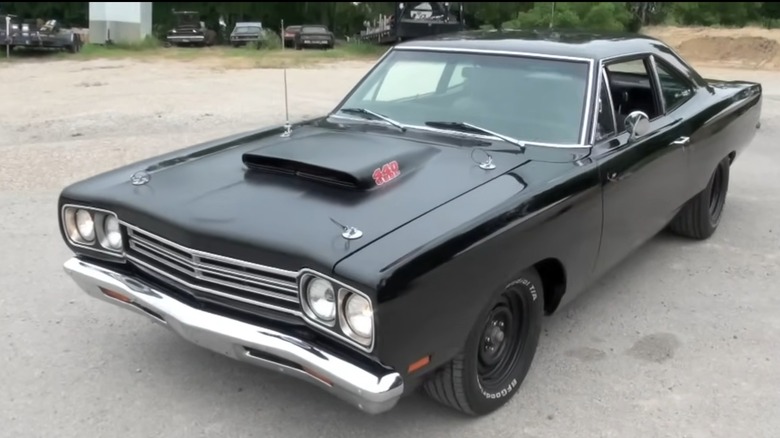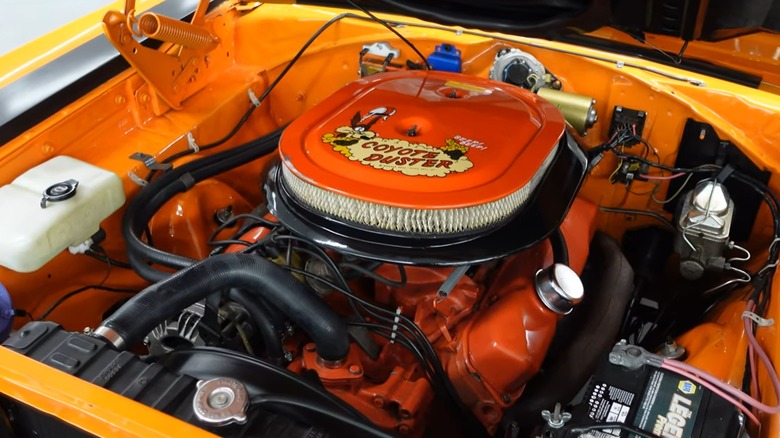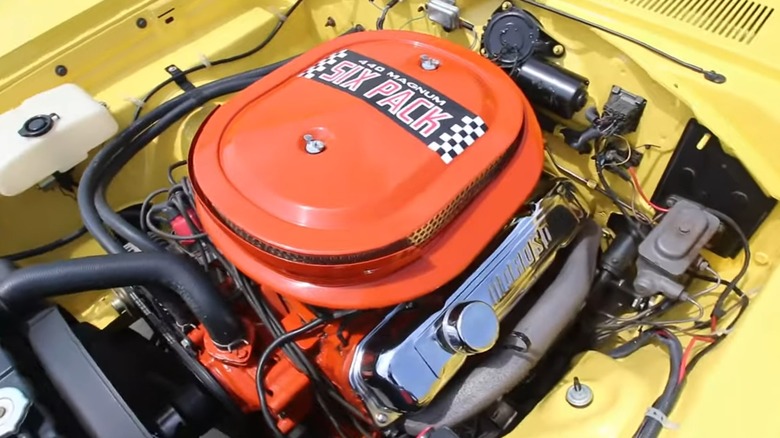All About The Engines That Powered The 1969 Plymouth Road Runner
The Plymouth Road Runner is an icon of U.S. American muscle and one of the most powerful Plymouth cars ever built. Beginning in 1968, Plymouth produced the Road Runner until 1980 and throughout those years, the muscle car saw a few changes, including several facelifts, redesigns, and drivetrain updates. While each iteration is special in its own way, the 1969 Road Runner has achieved legendary status during the past five decades.
With its relatively affordable base price and performance options, the '69 Road Runner became an instant classic among car fanatics and drag racers. Its base engine had a displacement of 383 cubic in and produced an impressive 335 hp, making it an affordable and accessible source of power and speed. While most of these Road Runners featured the base 383 V8, two other engines were available: A 426 cubic in HEMI and a 440 cubic in V8 featuring three 2-barrel Holley carburetors.
Let's dive in and explore all three of these powerful engines and what made them so great.
Chrysler B 383 engine
The base engine offered in the 1969 Plymouth Road Runner was a 383 cubic in, 6.3L V8. Known as the 383 Road Runner and the Golden Commando, the base model 383 featured a 10:1 compression ratio and a 4-barrel carburetor, and it was capable of producing 335 hp and a whopping 425 lb-ft of torque. It featured optional custom air grabber hood scoops, allowing the engine to pull in more oxygen and create more power, and Plymouth allowed customers to choose between a 3-speed automatic transmission and a 4-speed manual. The base 383 engine was available with air conditioning as an add-on, but choosing to add AC resulted in a loss of 5 hp. Still, at 330 hp and more than 400 lb-ft of torque, the 383 Road Runner was a beast, even with AC-induced power loss.
Prices for the '69 Road Runner started out at a modest $2,945 for the 2-door coupe — about $25,000 in today's money. The hardtop came in slightly more expensive at $3,083, while the convertible option went for $3,313.
Chrysler 426 HEMI and Chrysler A12 440 engines
Upon its release, the 1969 Road Runner was available with the 383 V8 and an optional 426 cubic in, 7.0L HEMI. The HEMI featured an upgraded 10.2:1 compression ratio and was capable of making a massive 425 hp and 490 lb-ft of torque. Other upgrades featured on the HEMI version included a fortified rear axle and beefed-up suspension system to handle the extra power and safely transfer it to the wheels.
Midway through the 1969 production year, Plymouth released the 440 big block version of the Road Runner. Known as the powerful 440 Super Commando 6-pack due to its three 2-barrel carburetor setup, the A12 440 was capable of 390 hp and 490 lb-ft of torque.
Both the 426 HEMI and 440 six-packs were available with either the 3-speed automatic transmission or a 4-speed manual. The HEMI had more horsepower than the 440 6-pack; however, the 440 featured a lighter body due to a fiberglass hood and lighter engine. This meant that the 440 was able to squeak by the HEMI in the quarter mile. While the HEMI had an average quarter-mile time of 13.32 seconds, the 440 6-pack came in at 12.91 seconds. The base model 383, on the other hand, had an average quarter-mile time of a modest 14.35 seconds.
In terms of pricing, adding the 426 HEMI cost drivers an extra $813 on top of base model options. In comparison, the 440 6-pack cost drivers an additional $250 after base options.


